Suchergebnisse für "Factsheet%3A Energietechnologien gestalten%2C die f%C3%BCr alle sinnvoll und nutzbar sind"
National Energy Efficiency Conference 2016
15. – 16. November 2016
Sydney, Australia
Australia’s leading event for anyone with an interest in energy efficiency
The website energytech.at has been discontinued
Most relevant parts have been integrated into the website Nachhaltig Wirtschaften.
Building With Renewable Raw Materials

Indigenous Renewable Raw Materials for the "Building of Tomorrow"
4/2002
Herausgeber: BMVIT
Englisch, 6 Seiten
Downloads zur Publikation
Modellsysteme weisen den Weg in unsere Energiezukunft
Konzepte zur vollständigen Versorgung einzelner Gebiete mit erneuerbaren Energieträgern
Workshop: Energieregionen der Zukunft - Nukleus der Energieinnovation
Veranstaltet im Rahmen des Strategieprozesses e2050.
Leitfaden für den Weg zum aktiven Verteilernetz
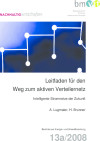
Intelligente Stromnetze der Zukunft
13a/2008
A. Lugmaier, H. Brunner
Herausgeber: BMVIT
Deutsch, 48 Seiten
Downloads zur Publikation
DG DemoNetz - Konzept
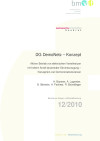
Aktiver Betrieb von elektrischen Verteilnetzen mit hohem Anteil dezentraler Stromerzeugung - Konzeption von Demonstrationsnetzen
Schriftenreihe
12/2010
H. Brunner, A. Lugmaier, B. Bletterie, H. Fechner, R. Bründlinger
Herausgeber: BMVIT
Deutsch, 198 Seiten
Downloads zur Publikation
Schaffung von rechtlichen Potenzialen für Urban Mining im Abfallrecht
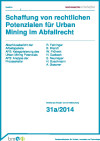
Schriftenreihe
31 /2014
R. Fehringer, B. Brandt, W. Frühwirth, et al.
Herausgeber: BMVIT
Deutsch, 274 Seiten
Downloads zur Publikation
IEA - Advanced Fuel Cells: Österreichische Beteiligung am Implementing Agreement on Advanced Fuel Cells
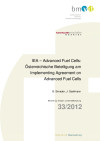
Schriftenreihe
33/2012
G. Simader, J. Gsellmann
Herausgeber: BMVIT
Deutsch, 68 Seiten
Downloads zur Publikation
IEA Bioenergy Task 33: Newsletter Vol. 3/2014

Thermische Biomassevergasung
Herausgeber: BMVIT
Deutsch, 5 Seiten
Downloads zur Publikation
IEA Bioenergy Task 33: Newsletter Vol. 2/2014
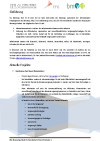
Thermische Biomassevergasung
Herausgeber: BMVIT
Deutsch, 3 Seiten
Downloads zur Publikation
IEA Bioenergy Task 39 Business Meeting Australien
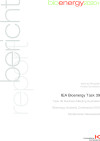
Bioenergy Australia Conference 2010Studienreise Neuseeland
Manfred Wörgetter, Andrea Sonnleitner
Herausgeber: BMVIT
Deutsch, 60 Seiten
Downloads zur Publikation
IEA Bioenergy Task 33: Newsletter Vol. 2/2015

Thermische Biomassevergasung
Herausgeber: BMVIT
Deutsch, 7 Seiten
Downloads zur Publikation
IEA Hybrid and Electric Vehicles - Annual Report 2012

The electric drive gains traction
Herausgeber: IEA - International Energy Agency
Deutsch, 234 Seiten
Downloads zur Publikation
Smart Grids Pionierregion Oberösterreich
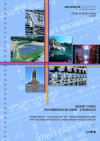
Strategien für ein zukunftsfähiges Energiesystem mit maximalem Einsatz erneuerbarer Ressourcen
1/2011
Herausgeber: BMVIT
Deutsch, 6 Seiten
Downloads zur Publikation
Intensified Density - a small scale densification strategy for the suburbs by using modular construction
The project investigated whether a small scale densification strategy for the suburbs / intermediary cities, using modular construction, and existing infrastructure on empty plots of land, can offer a competing alternative to not only the sprawl of single family dwellings but also to large projects.
NEST international - New standards for old houses international
The main goal was to raise awareness for energetic renovations of settlement houses due to the handbook "Neue Standards für alte Häuser" in Slovakia and the Czech Republic. In doing so, the refurbishment potential has been identified in the target countries, experiences exchanged and information transferred. Contacts to the relevant target groups have been established.
"1000 Passivehouses in Austria" - Passive house object databank

The first joint project of the four IG passive house organisations on behalf of the programme line "Building of Tomorrow" - an initiative of the Federal Ministry for Transport, Innovation and Technology - for the purpose of setting up a detailed network documentation of 80% of all passive houses in Austria.
